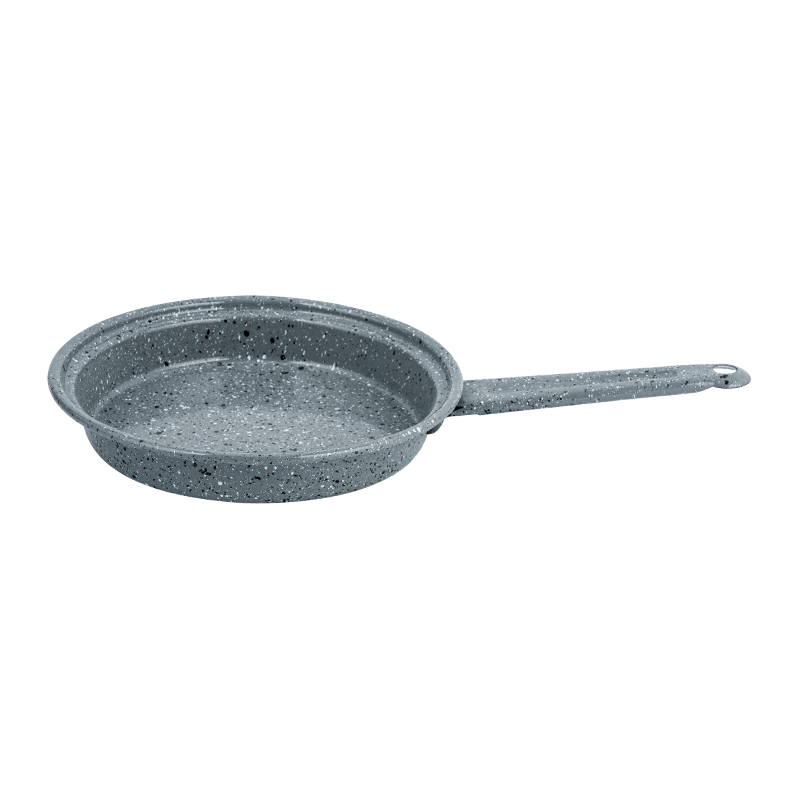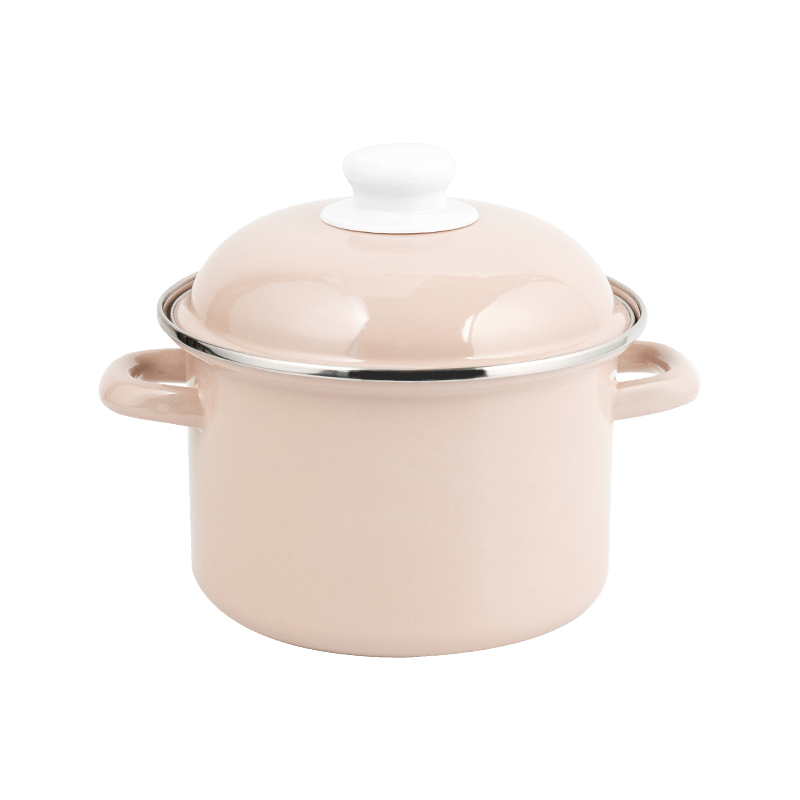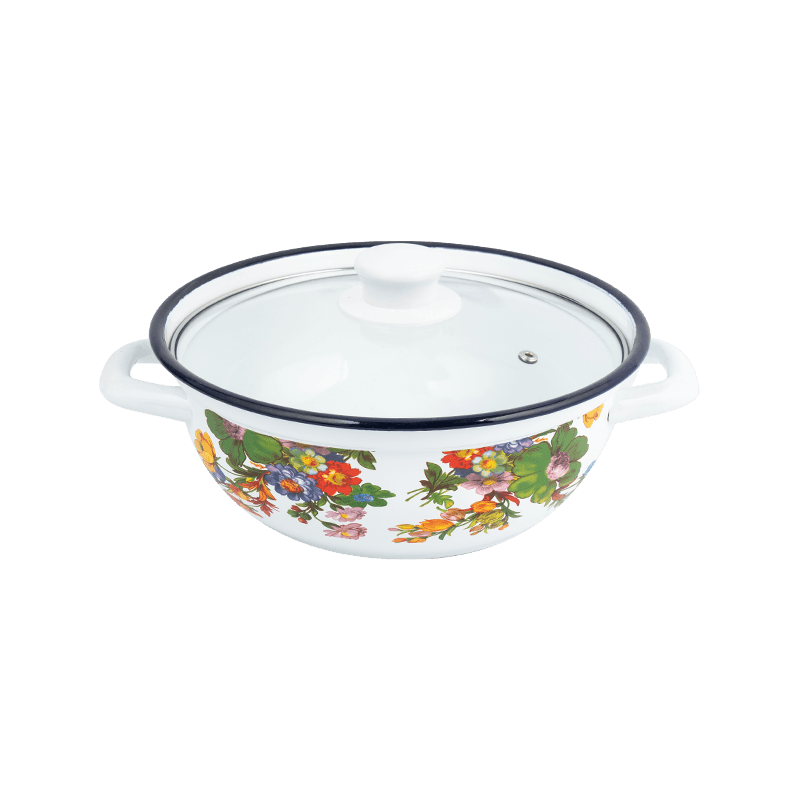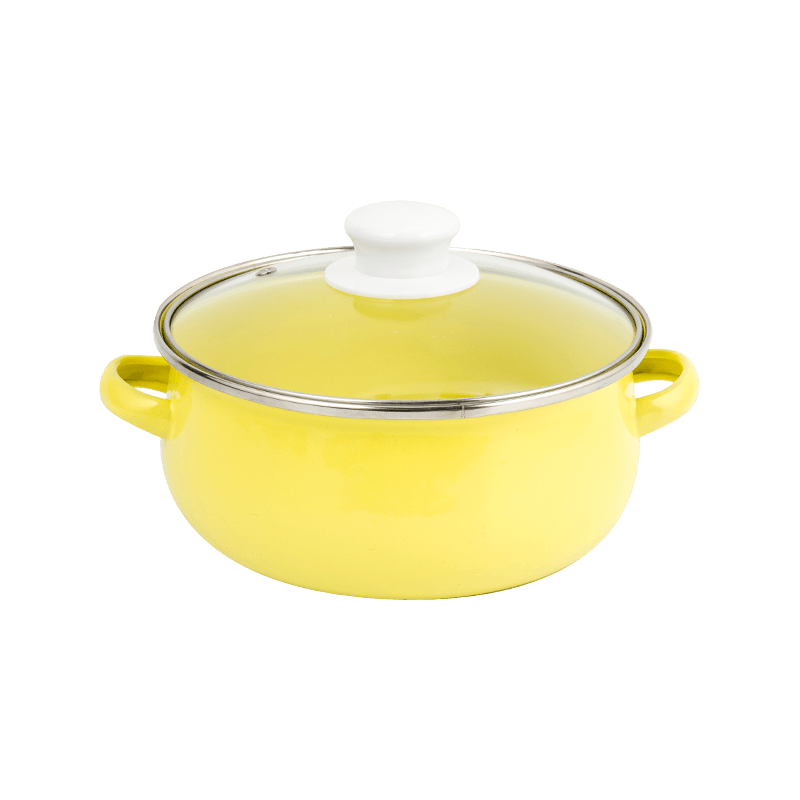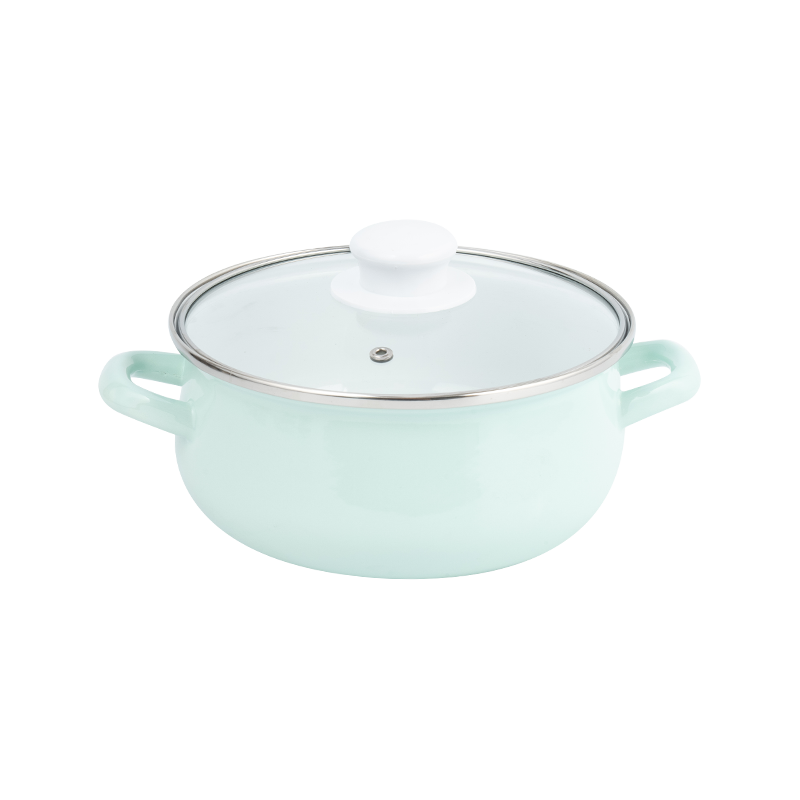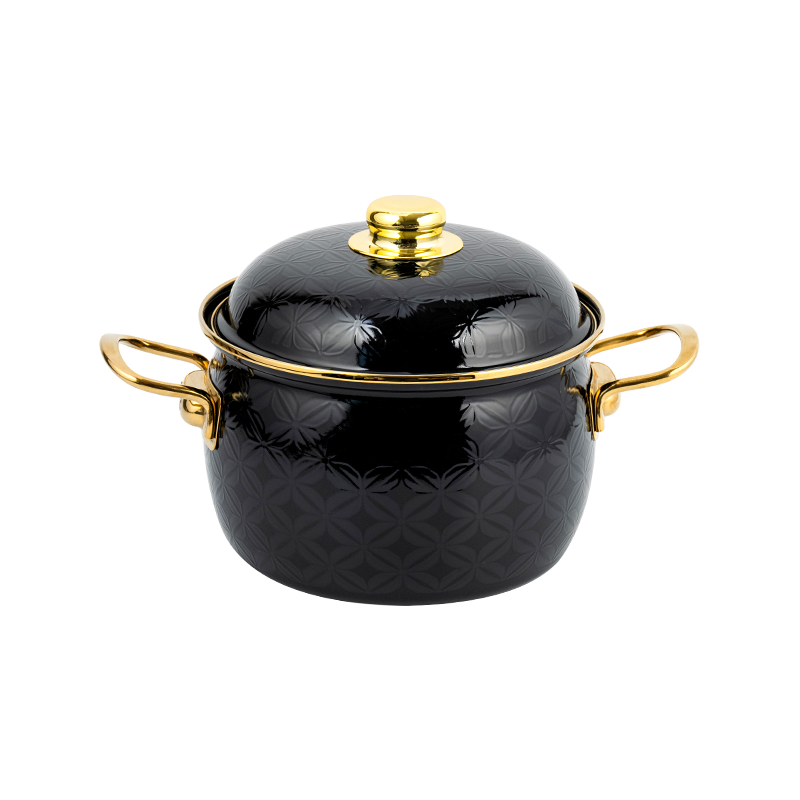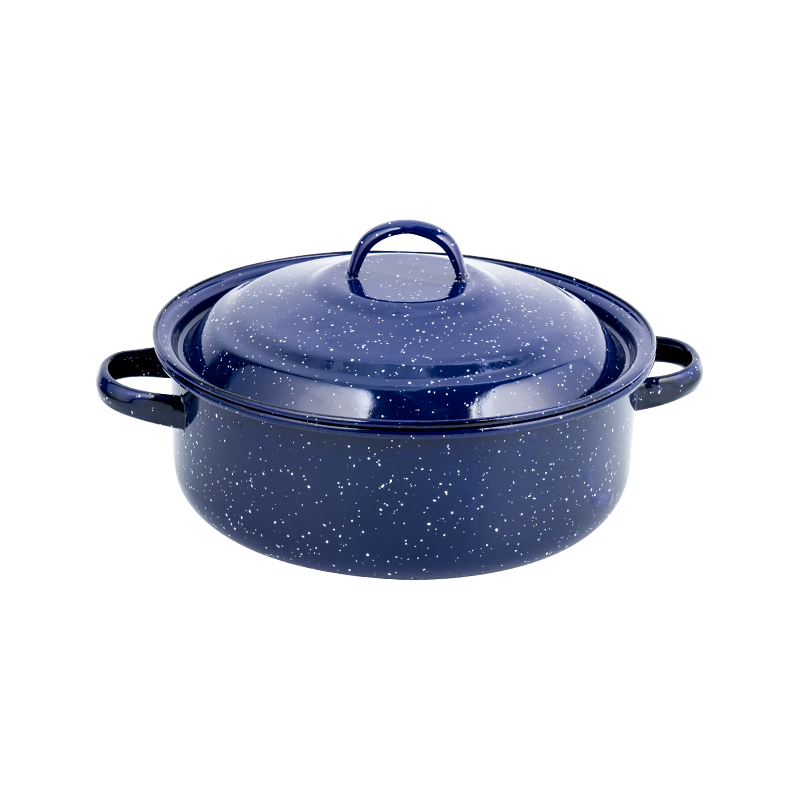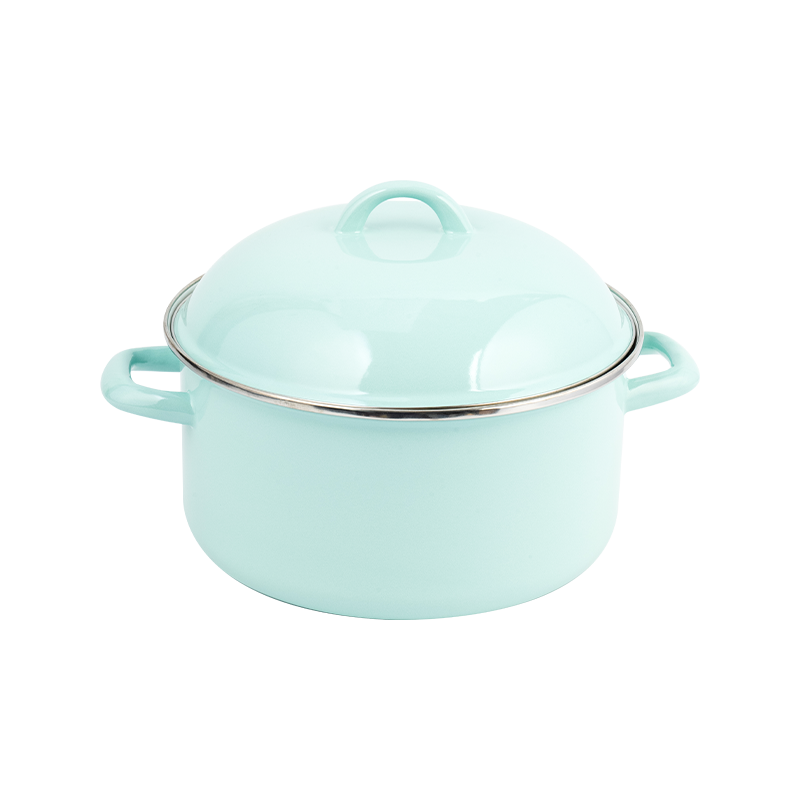Heat retention is a critical factor in cookware performance, influencing cooking efficiency, energy consumption, and food quality.
Types of Cookware
Double Handle Enamel Pot: This cookware typically features a cast iron core coated with a layer of enamel, a glass-based material fused to the metal at high temperatures. The double handle design allows for balanced lifting and handling, often used in larger pots for even weight distribution. The enamel coating provides a non-reactive surface, while the underlying cast iron contributes to its thermal properties.
Traditional Stainless Steel Pots: These are commonly made from austenitic stainless steel, an alloy containing chromium and nickel. They may include layered constructions, such as aluminum or copper cores, to enhance heat conduction. Stainless steel pots are known for their durability, corrosion resistance, and lightweight nature compared to cast iron-based options.
Applications
Double Handle Enamel Pot: It is often used for slow-cooking dishes, such as stews, braises, and soups, where consistent heat retention helps maintain temperatures over extended periods. The enamel surface allows for cooking acidic foods without metallic taste transfer.
Traditional Stainless Steel Pots: These are versatile for tasks requiring rapid heating, such as boiling water, sautéing, or making sauces. They excel in applications where precise temperature control is needed, but may require adjustments for heat retention.
Comparison: Heat Retention
Heat retention refers to a material's ability to maintain heat after the heat source is removed. This property depends on factors like thermal mass, conductivity, and material density.
Double Handle Enamel Pot: The cast iron core in a Double Handle Enamel Pot has high thermal mass, meaning it absorbs and releases heat slowly. This results in superior heat retention, as the pot continues to radiate heat evenly after turning off the stove. Studies on cast iron materials indicate that they can retain heat for longer durations, reducing the need for reheating and promoting energy efficiency. The enamel coating does not significantly alter this property but adds a protective layer.
Traditional Stainless Steel Pots: Stainless steel has lower thermal mass compared to cast iron. Without additional core layers, it heats up quickly but also loses heat rapidly. Pots with aluminum or copper cores improve heat distribution but may not match the retention capabilities of cast iron-based pots. Data from thermal conductivity tests show that stainless steel dissipates heat faster, which can lead to temperature fluctuations in dishes requiring prolonged warmth.
In summary, a Double Handle Enamel Pot generally offers better heat retention due to its cast iron construction, while stainless steel pots provide faster heating but require more attention to maintain consistent temperatures.
Frequently Asked Questions (FAQs)
Q1: Does a Double Handle Enamel Pot retain heat better than stainless steel pots?
A: Based on material properties, a Double Handle Enamel Pot with a cast iron core typically retains heat more effectively than standard stainless steel pots. However, stainless steel pots with layered cores may offer improved retention, though not to the same extent as cast iron.
Q2: What are the advantages of each type in terms of heat management?
A: A Double Handle Enamel Pot excels in slow-cooking scenarios due to its high heat retention, reducing energy use. Stainless steel pots allow for quicker temperature changes, making them suitable for tasks like searing or boiling.
Q3: How does the double handle design affect heat retention?
A: The double handle design does not directly influence heat retention; it primarily aids in stability and handling. Heat retention is determined by the core material, such as cast iron in a Double Handle Enamel Pot.
Q4: Are there maintenance considerations that impact heat retention over time?
A: For both types, proper care is essential. Enamel coatings on a Double Handle Enamel Pot can chip if mishandled, potentially exposing the cast iron and affecting performance. Stainless steel pots may develop hotspots if warped, but they generally maintain consistency with routine use.

 English
English 中文简体
中文简体




